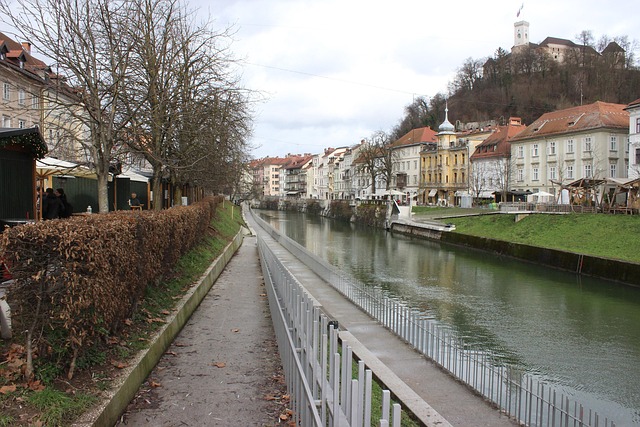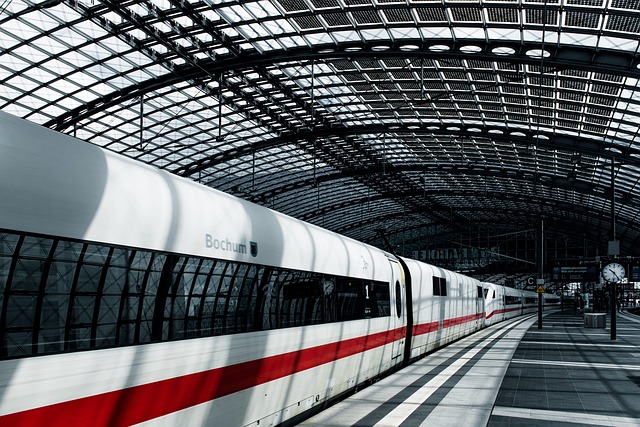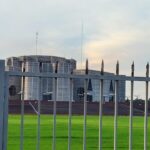Karachi's booming economy is fueled by its vibrant metropolis, but the Karachi Motorway poses a significant challenge with noise pollution from heavy traffic. This issue negatively impacts nearby communities' quality of life and health, with sound levels exceeding environmental guidelines during peak hours. Mitigation strategies include improved infrastructure, stricter traffic management, sound-absorbing barriers, and green spaces. Collaborative efforts between authorities, environmentalists, and residents have led to successful pilot projects. Practical solutions like using noise-reducing materials in construction, installing barriers, promoting electric vehicles, and stringent enforcement of noise control laws can create a quieter, healthier Karachi.
In the bustling metropolis of Karachi, the Karachi Motorway serves as a vital yet often noisy artery. This article delves into the impact of this highway on surrounding areas, focusing on noise pollution levels and its effects on residents. We assess current situations, explore health implications of prolonged exposure to high noise, review regulatory measures, and present potential solutions for a quieter future in Karachi. Understanding these issues is crucial for fostering a healthier, more livable city.
- Understanding Karachi's Motorway and Its Impact on Noise Pollution
- Assessing the Current Situation: Noise Levels in Adjacent Areas
- Health Implications of Prolonged Exposure to High Noise Near Motorway
- Regulatory Measures and Efforts to Mitigate Noise Disturbance
- Possible Solutions and Future Strategies for a Quieter Karachi
Understanding Karachi's Motorway and Its Impact on Noise Pollution

Karachi, as a vibrant metropolis and bustling economic hub, is known for its non-stop energy and traffic-congested streets. The Karachi Motorway, a significant thoroughfare designed to ease traffic congestion, has become an integral part of the city’s infrastructure. However, this high-speed highway also presents a hidden challenge: noise pollution. The constant flow of vehicles, especially heavy goods carriers and passenger buses, generates substantial noise levels that can impact nearby residential areas.
Understanding the dynamics of Karachi’s Motorway is crucial in addressing noise-related issues. The motorway’s design, with its high speed limits and heavy traffic volume, inherently contributes to elevated sound levels. As vehicles accelerate and decelerate, they produce noise from engines, tires, and wind resistance, creating a symphony of sounds that can reach problematic decibel levels. This noise pollution not only disrupts the peace and tranquility of surrounding communities but also poses potential health risks, affecting residents’ quality of life in Karachi.
Assessing the Current Situation: Noise Levels in Adjacent Areas

In Karachi, the proximity to the bustling Karachi Motorway presents a unique challenge in terms of noise pollution. Assessing the current situation requires a deep dive into the noise levels in adjacent areas. Studies have shown that residential and commercial districts nearby experience elevated sound levels due to heavy traffic flow on the motorway during peak hours. This constant exposure to high-decibel sounds significantly impacts the quality of life for locals, leading to various health issues such as sleep disturbances, stress, and even hearing loss over time.
The noise levels in these areas often exceed the recommended guidelines set by environmental authorities, highlighting a pressing need for intervention. By understanding the current scenario, stakeholders can implement targeted strategies to mitigate noise pollution. This includes considering measures like improving road infrastructure, implementing stricter traffic management protocols, and exploring sound-absorbing barriers or green spaces along the motorway to create a quieter environment for Karachi’s residents.
Health Implications of Prolonged Exposure to High Noise Near Motorway

Prolonged exposure to high noise levels near Karachi’s motorway can have significant health implications for residents and commuters alike. Noise pollution is often overlooked, but it can lead to a range of adverse effects on both physical and mental well-being. Studies have shown that constant exposure to loud noises can result in hearing loss, as the intense sound waves damage the delicate structures within the inner ear. This is particularly concerning in densely populated urban areas like Karachi, where motorway noise might be a persistent background hum for many communities.
Additionally, high noise levels are associated with stress and anxiety disorders. The constant disturbance can disrupt sleep patterns, leading to fatigue and decreased cognitive performance during the day. Children living in such environments may face developmental challenges, while elderly individuals might experience a greater sense of isolation. Karachi’s unique geographical location, with its bustling motorway, necessitates awareness about these health risks and prompts initiatives to mitigate noise pollution for a healthier urban environment.
Regulatory Measures and Efforts to Mitigate Noise Disturbance

In response to the escalating noise pollution concerns near Karachi Motorway, regulatory bodies and various organizations have initiated efforts to mitigate noise disturbance. These measures involve stricter enforcement of existing noise control regulations, such as setting specific decibel limits for certain areas and times. Regular sound level monitoring campaigns are conducted to identify problematic hotspots and ensure compliance with set standards. Additionally, awareness programs aimed at both the public and businesses are being implemented to promote voluntary noise reduction practices.
Karachi’s unique urban landscape demands innovative solutions. This includes promoting quieter transportation options, encouraging the use of noise-reducing barriers and materials in construction projects nearby, and advocating for better traffic management strategies. Collaborative efforts between local authorities, environmentalists, and residents have led to several successful pilot projects that hold promise for a quieter and more livable Karachi.
Possible Solutions and Future Strategies for a Quieter Karachi

To mitigate the noise pollution in Karachi, several practical solutions can be implemented. One effective approach is to enhance urban planning by incorporating sound-absorbing materials and designs in new constructions. Green spaces and parks along the motorway can act as natural barriers, reducing noise levels significantly. Additionally, installing noise barriers like walls or hedges in residential areas adjacent to the motorway can provide much-needed peace and quiet for locals.
Looking ahead, a comprehensive strategy should involve technology integration. Smart sensors and data analytics can monitor noise levels in real time, helping authorities identify hot spots. This data can guide targeted interventions, such as adjusting traffic signals or implementing speed limits to reduce noise. Furthermore, encouraging the use of electric vehicles and promoting public transport can substantially decrease noise pollution from road traffic. These measures, combined with stricter enforcement of existing noise control laws, will contribute to a quieter and more livable Karachi in the future.
Karachi’s Motorway, while vital for urban mobility, has contributed to significant noise pollution in adjacent areas. This article has explored the current situation, highlighting elevated noise levels and their potential health impacts. It has also examined existing regulatory measures and proposed innovative solutions, such as sound barriers, traffic flow optimization, and stricter enforcement of noise guidelines. By implementing these strategies, Karachi can strive for a quieter future, balancing urban progress with the well-being of its residents. Addressing noise disturbance is crucial to enhancing the quality of life in this bustling metropolis.





Leave a Reply